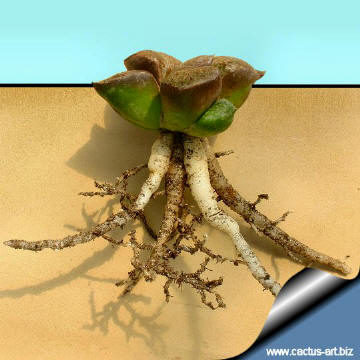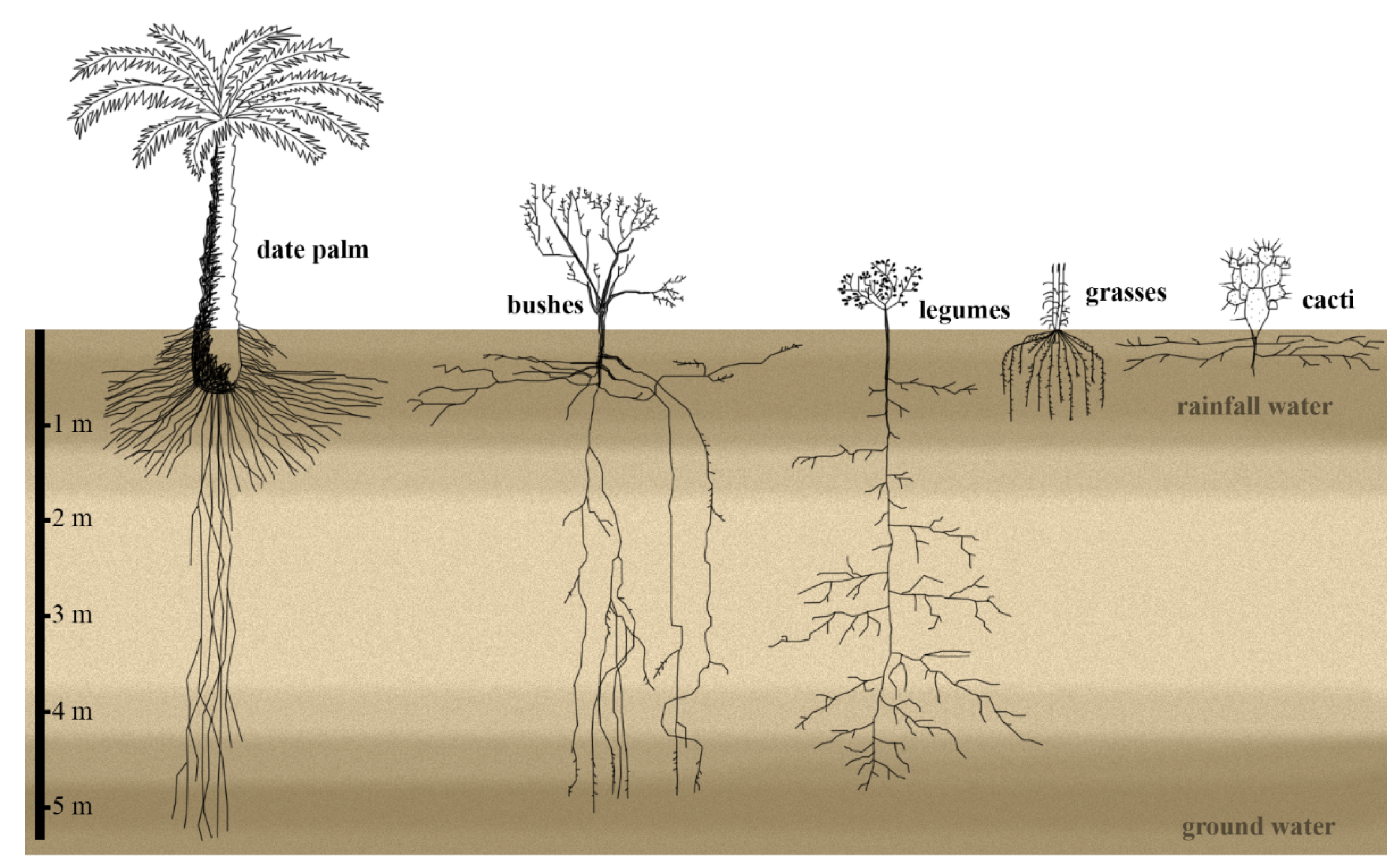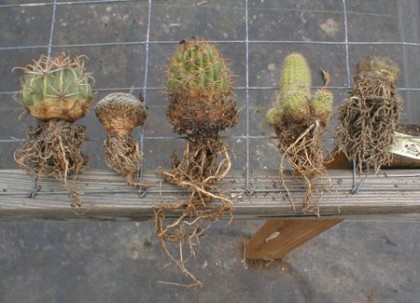40 cactus roots diagram
Plant Anatomy-Floral Structures in Cacti Below is a diagram of the flower of Opuntia chlorotica by Daniela Siroky (Exhibit Item #96) that illustrates an elongated floral tube that is armed with small hairs, or glochids. Also shown are the numerous stamens surrounding pistil, a characteristic floral structure of cacti. Do Cacti Have Roots? | Home Guides | SF Gate They include orchid cacti (Ephiphyllum spp.) and night-blooming cereus (Hylocereus undatus). The fleshy roots emerge from the sides of the stems and help to anchor the climbing cactus stems to the...
How Are Cactus Adapted To Survive In A Desert? - BYJUS Roots Cacti have shallow and wide fibrous roots close to the surface to quickly absorb rainwater. The desert is a dry place but it does experience rainfall occasionally. To collect rainwater from the ground, these plants have shallow roots that usually cover a large area.

Cactus roots diagram
Diagram with label of cactus plant? - Answers More answers. Atia Thomas ∙. Lvl 2. ∙ 2021-09-04 22:37:29. Copy. Drawing and labling diagram of cactus plant. This answer is: Helpful ( 2) cactus | Description, Distribution, Family, & Facts ... cactus, (family Cactaceae), plural cacti or cactuses, flowering plant family (order Caryophyllales) with nearly 2,000 species and 139 genera. Cacti are native through most of the length of North and South America, from British Columbia and Alberta southward; the southernmost limit of their range extends far into Chile and Argentina. Mexico has the greatest number and variety of species. Parts of the Agave Plant | Home Guides | SF Gate Parts of the Agave Plant. Agaves (Agave spp.) have a bold, interesting appearance and few maintenance requirements. The hardiness of these succulent perennials varies widely depending on the ...
Cactus roots diagram. Plant Fact Sheet: Saguaro Cactus - Arizona-Sonora Desert ... The saguaro is the largest cactus in the United States. Most of the saguaros roots are only 4-6 inches deep and radiate out as far from the plant as it is tall. There is one deep root, or tap root that extends down into the ground more than 2 feet. After the saguaro dies its woody ribs can be used to build roofs, fences, and parts of furniture. Cactus - Wikipedia Cacti are native to the Americas, ranging from Patagonia in the south to parts of western Canada in the north—except for Rhipsalis baccifera, which also grows in Africa and Sri Lanka . Cactus spines are produced from specialized structures called areoles, a kind of highly reduced branch. Areoles are an identifying feature of cacti. Palm Tree Roots - How Deep Do They Grow ... - Gardenine Dig up a hole twice the size of the root ball to ensure there will be enough room to put the plant in and create enough loose soil around it to allow new roots to grow easily. To reduce the risk of your palm tree toppling over in the storm or strong winds, ensure the top of the root-shoot interface is about one inch below the surface of the soil. draw an diagram of a cactus plant. - Brainly.in Draw an diagram of a cactus plant. 2 See answers Advertisement Advertisement nainaraj17 nainaraj17 Answer: cactus plant have very horny skin and has 2-3 branches in one stem this may help u imagine the picture of cactus and if needed more refer Google . Hope it helps u .
Saguaro Cactus Diagram - schematron.org SAGUARO PARTS DOING THE A CTIVITY SETTING THE STAGE 1) Draw an outline of a simple saguaro cactus on the board including · an arm with flowers and fruits on it · a pleated stem · spines · roots spanning shallowly below the surface of the ground 2) Ask the students, "What kind of a plant is this?" (a saguaro cactus!) Explain that. Cactus Root System - StudiousGuy Different kinds of the root system which cacti possess are explained below: Taproots A long, strong taproot is sent down by many cacti right after germinating. A taproot anchors a plant from washing away during storms and conducts deeper subsurfaces soil layers with more moisture. Taproots are mostly found in the genre Copiapoa. Saguaro Roots - Saguaro National Park (U.S. National Park ... By the time a saguaro is four feet tall its roots have been growing for as many as 55 years and they stretch out four feet from the main stem in all directions, and three to five inches deep. The roots have special hairs on them that enable the collection of up to 200 gallons of water during a rainfall. Contractile roots - Cactus-art A contractile root is a thickened specialized root at the base of a corm , bulb , rosette or other organ which is designed to shrink vertically under conditions of seasonal drought that helps position this plant part at an appropriate level in the ground. Contractile roots of Haworthia emelyae v. comptoniana pull the plant deeper into the soil ...
How Cacti Perform Photosynthesis (In A Different Way ... Water is absorbed into the plant primarily through the roots, and is broken apart into its component atoms—hydrogen and oxygen—to serve as a source of chemical energy for the actual synthesis process. Water is also a source of hydrogen, which is the other main ingredient in sugar. Light energy is absorbed into plants through their chloroplasts. Parts of a Cactus | eHow Cactus plants have a broad, shallow root system designed for efficient water collection. These root systems are often very close to the surface to catch small amounts of rainfall that does not penetrate deeper layers of soil. The broad root system protects them from wind damage in dry, loose soils. Discover the 3 Cactus Parts that Sets it Apart | Succulent ... There are 4 most frequent types of cactus roots, classified according to their shape. Taproots - large, central, and dominant root from which other roots sprout laterally. Typically a taproot is somewhat straight and very thick, is tapering in shape, and grows directly downward. Fibrous roots - the opposite of a taproot system. Cactus Adaptations - Labelled diagram Cactus Adaptations - Labelled diagram Spikes instead of leaves, Thick, waxy skin, Large fleshy stems, Shallow, widespread roots, Green coloured stem. Cactus Adaptations Share by Lars7 Like Edit Content More Leaderboard Log in required Theme Log in required Options Switch template Interactives
PDF SAGUARO PARTS - Arizona-Sonora Desert Museum cactus on the board including · an arm with flowers and fruits on it · a pleated stem · spines · roots spanning shallowly below the surface of the ground 2) Ask the students, "What kind of a plant is this?" (a saguaro cactus!) Explain that saguaros are special plants for a lot of reasons, and one is that they are only
Do Cacti Have Roots? (What They Look Like) - CactusCare The majority of cactus roots are lateral roots, also known as adventitious roots. Lateral roots are extensive systems of outward growing roots that branch off in all directions from the primary root, or taproot. These roots are essential to the survival of cacti, especially in the desert. They are typically short lived compared to the primary root.
How Does a Cactus Survive in the Desert? - CactusWay The cactus plant survives in the desert by using the adaptation technique. This plant's leaves, roots, and stems have adapted to the desert to enable it to absorb, and conserve water. The science behind how a cactus can thrive in the desert while other plants can't is easy to understand. Read on to understand better how the plant adapts ...
PDF Cacti Adaptations - University of California, San Diego Cacti live in the desert where there is little water so losing water through transpiration is deadly! Roots • Spread out wide from the plant • Grow close to the ground's surface • Collect surface water Fibrous Roots Taproots • Anchor the cacti • Store food want water deep underground away from hot and dry weather • Reach deeper water supply
Understanding the Cactus Root Systems: 4 Types of Cactus ... Cactus roots are covered in a cork-like layer that prevents water loss. Some cacti have tuberous roots that are thick and fleshy, and act as storage organs for food and water. Most cacti have fibrous root systems that spread and are made of connective tissue. Both types of root have fine absorbent hairs that line the outside of the plant.
Fishbone Cactus: Indoor Plant Care and Growing Guide The fishbone cactus is a low-maintenance plant that grows well indoors as a houseplant. It thrives in bright, indirect light and enjoys moist, humid conditions. Native to the jungles of Mexico where it grows from tree branches, the fishbone cactus is epiphytic, meaning it can also grow in low soil conditions if necessary.
cactus diagram Diagram | Quizlet cactus diagram. STUDY. Learn. Flashcards. Write. Spell. Test. PLAY. Match. Gravity. Created by. Ella-jamieson. Terms in this set (5) waxy skin. reflects heat. fat fleshy stem. stores water inside. spikes. help protect it from animals and humans. roots. spread out roots to collect water when it does rain and nutrients.
How to Draw a Cactus: 6 Steps (with Pictures) - wikiHow Steps Download Article. 1. Stem. For the stem of the cactus, draw an oval shape, with the smaller end curving towards the ground. It should resemble a pickle, or a slightly elongated jellybean. 2. Arms. Draw two arms on either side of the stem. The leaves are small curved ovals, with the smaller end connected to the stem.
Cactus (Cactaceae) - More Detail - eduscapes Cactus spines keep the plant from being eaten by most animals. Cactus spines can be short, long, soft or sharp. Spines can be straight or hooked. Spines grow on the stem in clusters called areoles. The areoles sometimes form patterns along the cactus. Look for the ridges in the barrel cactus above. The ribs give the plant shade and help store ...
Label a Cactus - Labelled diagram Roots, Spikes, Waxy Skin, Flower. Label a Cactus. Share Share by Wordwall45. Like. Edit Content. Embed. More. Leaderboard. Show more Show less . This leaderboard is currently private. Click Share to make it public. This leaderboard has been disabled by the resource owner. This leaderboard is disabled as your options are different to the ...
Parts of the Agave Plant | Home Guides | SF Gate Parts of the Agave Plant. Agaves (Agave spp.) have a bold, interesting appearance and few maintenance requirements. The hardiness of these succulent perennials varies widely depending on the ...
cactus | Description, Distribution, Family, & Facts ... cactus, (family Cactaceae), plural cacti or cactuses, flowering plant family (order Caryophyllales) with nearly 2,000 species and 139 genera. Cacti are native through most of the length of North and South America, from British Columbia and Alberta southward; the southernmost limit of their range extends far into Chile and Argentina. Mexico has the greatest number and variety of species.
Diagram with label of cactus plant? - Answers More answers. Atia Thomas ∙. Lvl 2. ∙ 2021-09-04 22:37:29. Copy. Drawing and labling diagram of cactus plant. This answer is: Helpful ( 2)











![PDF] PREVENTION OF DESERT SOIL EROSION AND ENHANCING SOIL ...](https://d3i71xaburhd42.cloudfront.net/6fc1c41bb2f78f67283427f3aad3620fca47032f/3-Figure1-1.png)










:max_bytes(150000):strip_icc()/how-to-grow-cactus-1902954-04-69e55884693744de924906ddd41c2a81.jpg)







Comments
Post a Comment